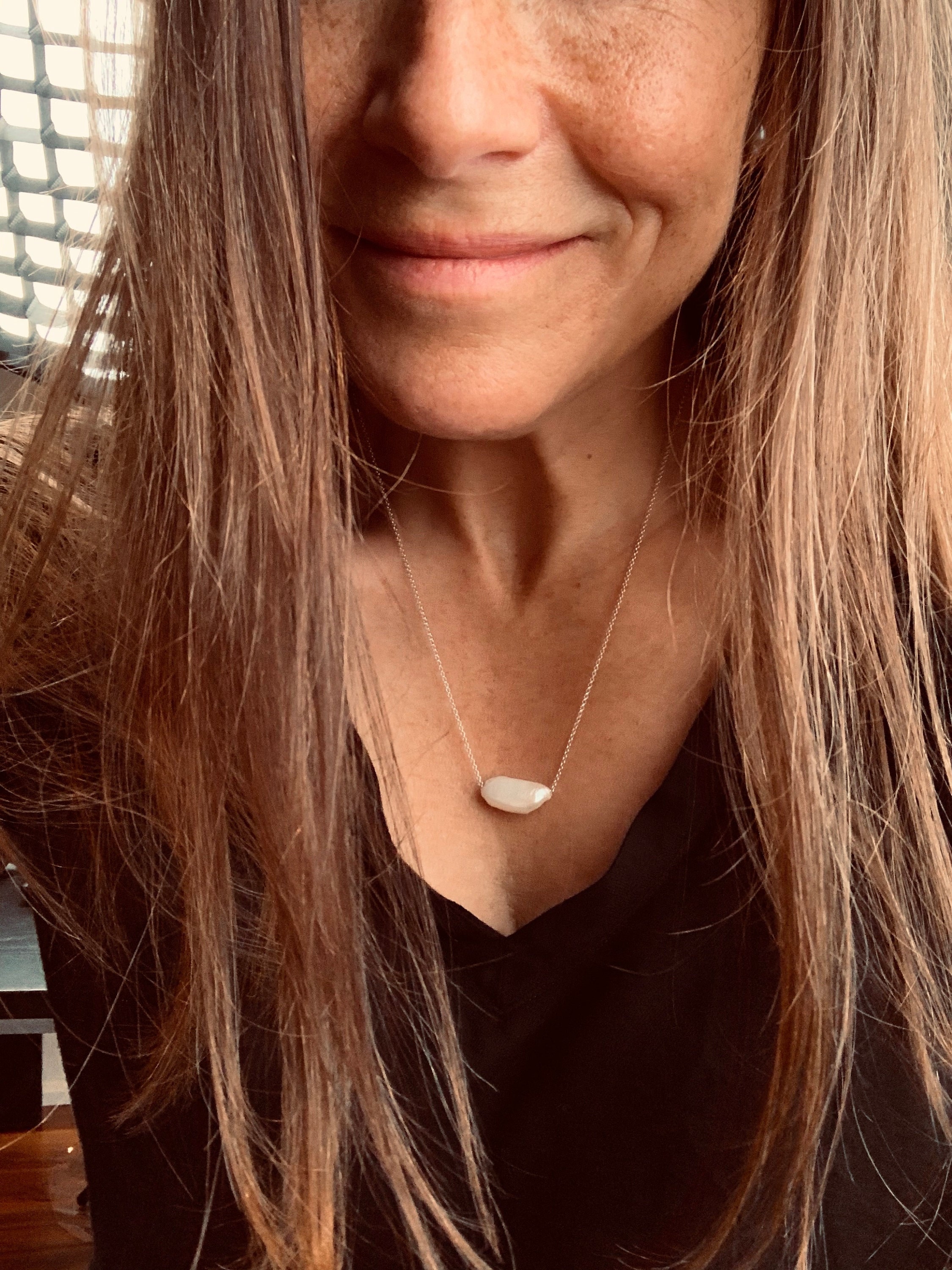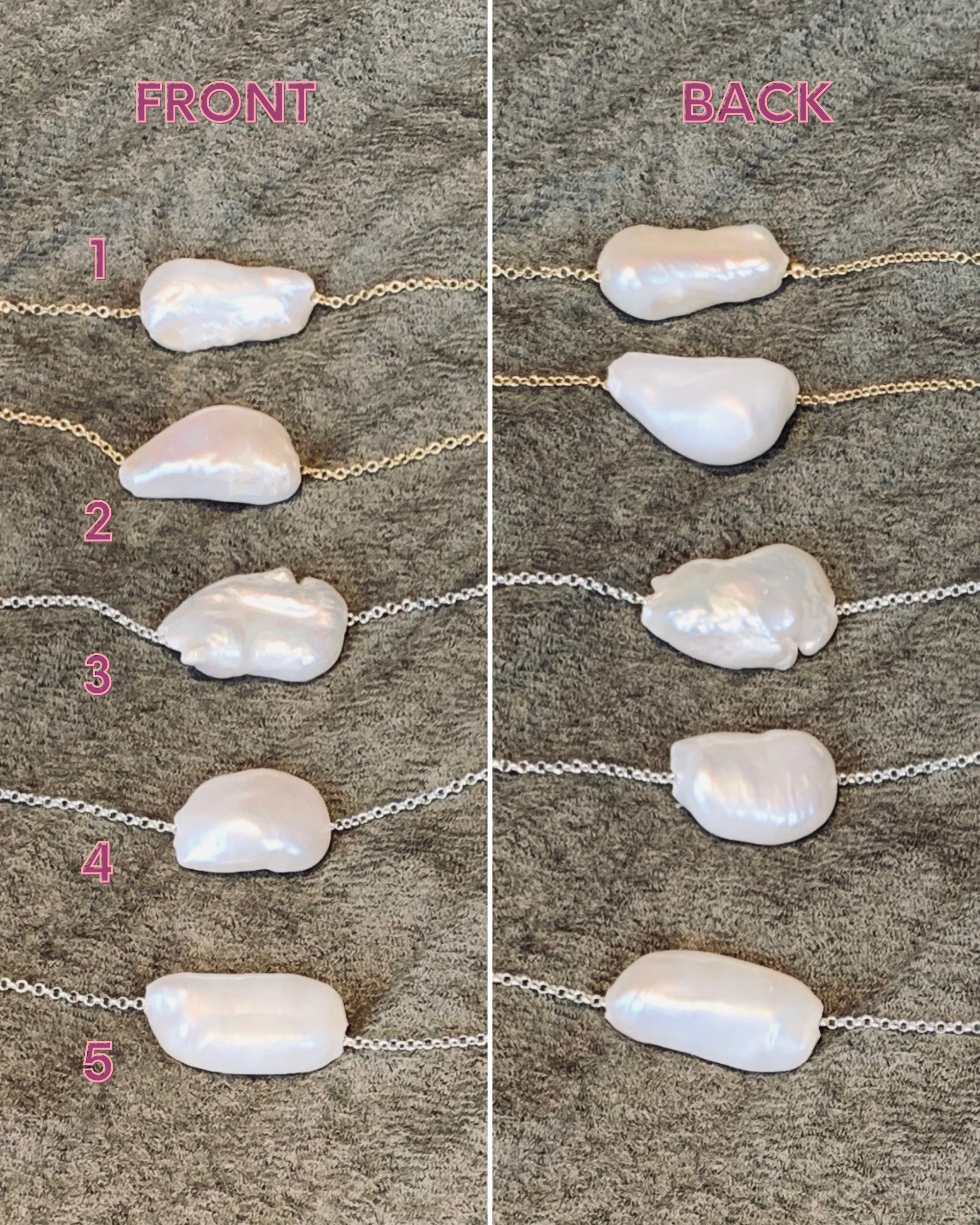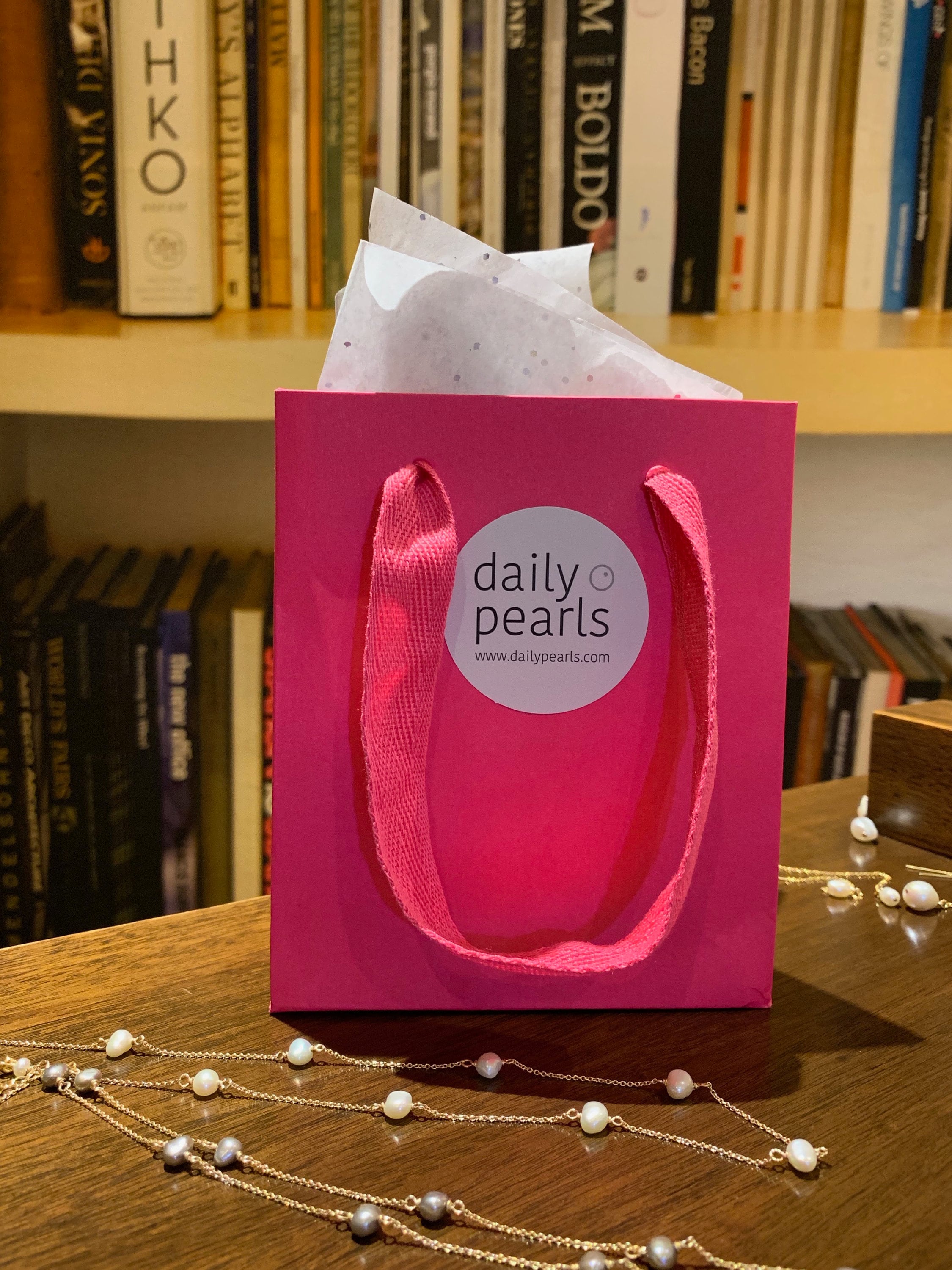White Freshwater Biwa Pearls and 14k-Gold-Filled or Sterling Silver Necklaces, Interesting and Unusual
$57.23
These wide pearls slide on 20" sterling silver or 14k-gold-filled chains, and look equally fabulous sliding on either. The longer length works well with these wide pearls, which are bumpy and interesting. Please select the pearl you would like when you check out.
The culturing of Biwa pearls originated in Lake Biwa, Japan, but many (like these) are now cultured in China.
If requested, your necklace will be sent with a pink gift bag and tissue paper.
If you are in Toronto, and would like to pick up your pieces in Moore Park, please make a note in your order.
Shipping is included, and earrings will be sent by regular mail, which is quite slow right now and does not come with tracking.
If you are shopping from Canada and would like to upgrade to XPresspost (2-3 days with tracking), please add select the $12 shipping option. If you are shopping from the US and would like to upgrade to UPS Ground (7-8 days), please select the $15 shipping option. If you would like express shipping to anywhere else in the world, please get in touch with us.
To keep your pearls looking their best, they should be the last thing you put on and the first thing you take off. Avoid getting perfume, hairspray, lotion, or any other chemical on them, and wipe them off right away if you do. Keep them out of water, where hair products, chlorine, or salt water could dull or discolour them. Water can also weaken the bond between the pearl and the post.
As popular as pearls are, the range of varieties and prices can get confusing. Here's what you need to know:
1) Almost every real pearl on today's market, regardless of variety, is “cultured.” A cultured pearl is grown in an ocean or a lake, and develops around a nucleus or irritant which is placed in an oyster or mollusk. The final product is created by nature, albeit with man’s help.
2) “Natural” pearls are pearls that have been found in oysters. Natural pearls found today sell for tens of thousands of dollars. Many natural pearls on the market are in antique pieces, and come with gemological x-ray certification.
3) The highest-priced cultured pearls are cultured in seawater, and there are three main varieties: Akoya, Tahitian, and South Sea. Akoya pearls, grown off the coast of Japan, were the first saltwater pearls to be cultured, and became the "classic" pearls your grandmother might have worn. Tahitian pearls, which are grown around Tahiti, grow naturally in shades of grey and black, and were developed in the 1970s. South Sea pearls, grown in the Southern Hemisphere, were developed more recently, and are considered by many to be the most desirable pearls.
4) Daily Pearls makes jewellery from cultured freshwater pearls, which are the most affordable variety of cultured pearls. China produces most of the world's freshwater pearls, many of which are unusually shaped, or "baroque."
5) Plastic or glass imitations of cultured pearls are called “simulated” pearls. You can tell the difference between cultured and simulated pearls by touching one to the top of your bottom teeth. If it feels gritty, the pearl is real. If it feels like plastic or glass, it is not a cultured pearl.
Let us know if we can help you with your pearl shopping!



